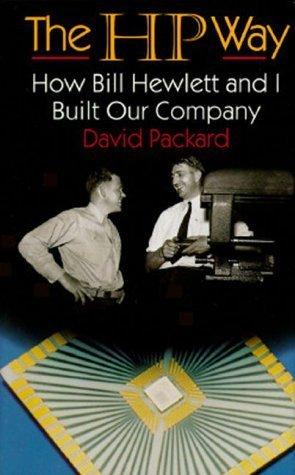David Packard suggested 7 objectives for HP managers at the “Sonoma Meeting” in his book, “The HP Way” that also apply to startups.
HP Way: Seven Objectives For Your Startup
I re-read David Packard’s book “The HP Way” recently and was struck by the “Sonoma Meeting” section in Chapter 5: “From Partnership to Corporation”
Another significant event that occurred early in 1957 was the company’s first off-site meeting of senior managers. This was a two-day meeting that took place at the Sonoma Mission Inn, about 70 miles north of San Francisco. About twenty people attended.
David Packard in “The HP Way“
 Packard lists three reasons for the meeting:
Packard lists three reasons for the meeting:
- Get key managers together at least once a year to discuss policies and problems, to exchange views, and to make plans for the future.
- With 1200 people in the company, the founders could no longer personally manage all of the key issues. They still wanted to maintain a small company atmosphere.
- Get agreement on key objectives so that they would steer in a common direction. Allow everyone to comment and have a hand in developing them, with an eye to periodic revision.
They started with six but in 1966 they were revised into the following seven; reading them again I thought this would make a good default set for any technology startup:
- Profit. To recognize that profit is the best single measure of our contribution to society and the ultimate source of our corporate strength. We should attempt to achieve the maximum possible profit consistent with our other objectives.
- Customers. To strive for continual improvement in the quality, usefulness, and value of the products and services we offer our customers.
- Field of Interest. To concentrate our efforts, continually seeking new opportunities for growth but limiting our involvement to fields in which we have capability and can make a contribution.
- Growth. To emphasize growth as a measure of strength and a requirement for survival.
- Employees. To provide employment opportunities for HP people that include the opportunity to share in the company’s success, which they help make possible. To provide for them job security based on performance, and to provide the opportunity for personal satisfaction that comes from a sense of accomplishment in their work.
- Organization. To maintain an organizational environment that fosters individual motivation, initiative and creativity, and a wide latitude of freedom in working toward established objectives and goals.
- Citizenship. To meet the obligations of good citizenship by making contributions to the community and to the institutions in our society which generate the environment in which we operate.
Obviously the management team would have to decide how they were going to keep score in detail on each of these (#1 is fairly obvious but the others are a little more complex). For more background see the HP Memory Project and HP History Links at the HP Alumni site. It’s also interesting to compare the seven from 1966 with HP’s current corporate objectives which feel padded and much less action oriented.
Related Blog Posts
- Bill Davidow on Silicon Valley Values
- Second Sight: A Meditation on Silicon Valley and 9-11
- Yanis Varoufakis: “Valve is an Enlightened Oligarchy”
- Four Excerpts from Valve Employee Handbook That Belong in Yours
- The Future, Arriving Yesterday, Remains In Constant Motion
- Thought Leadership: Rotary Club Four Way Test
- HP’s Early Customers Came From Fred Terman’s Social Network
